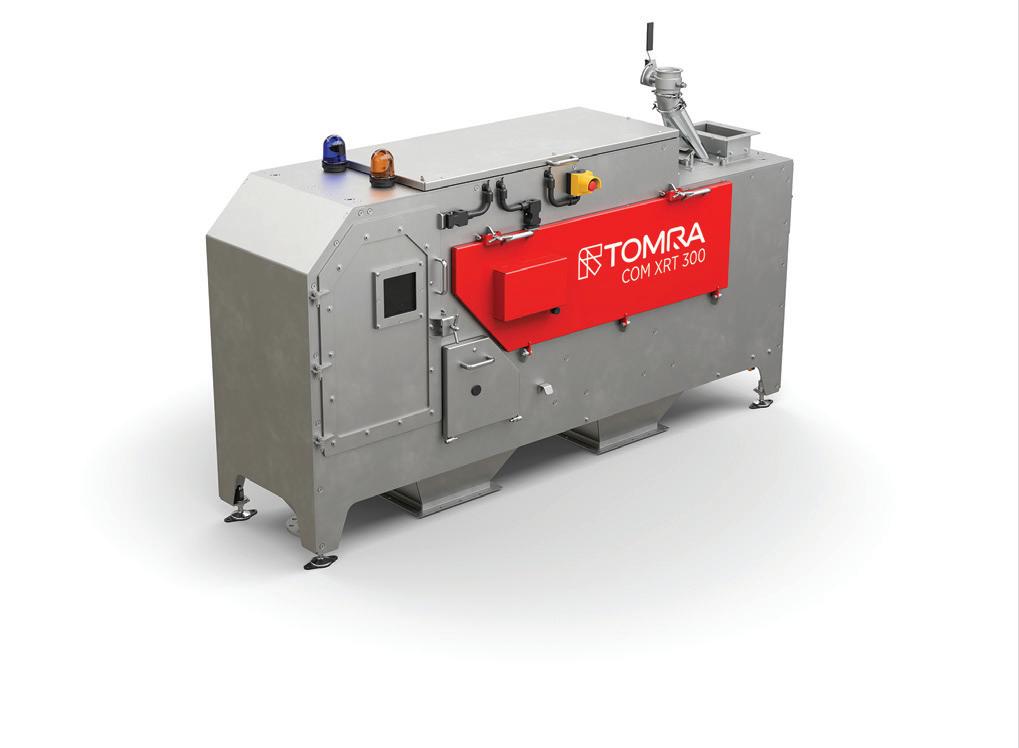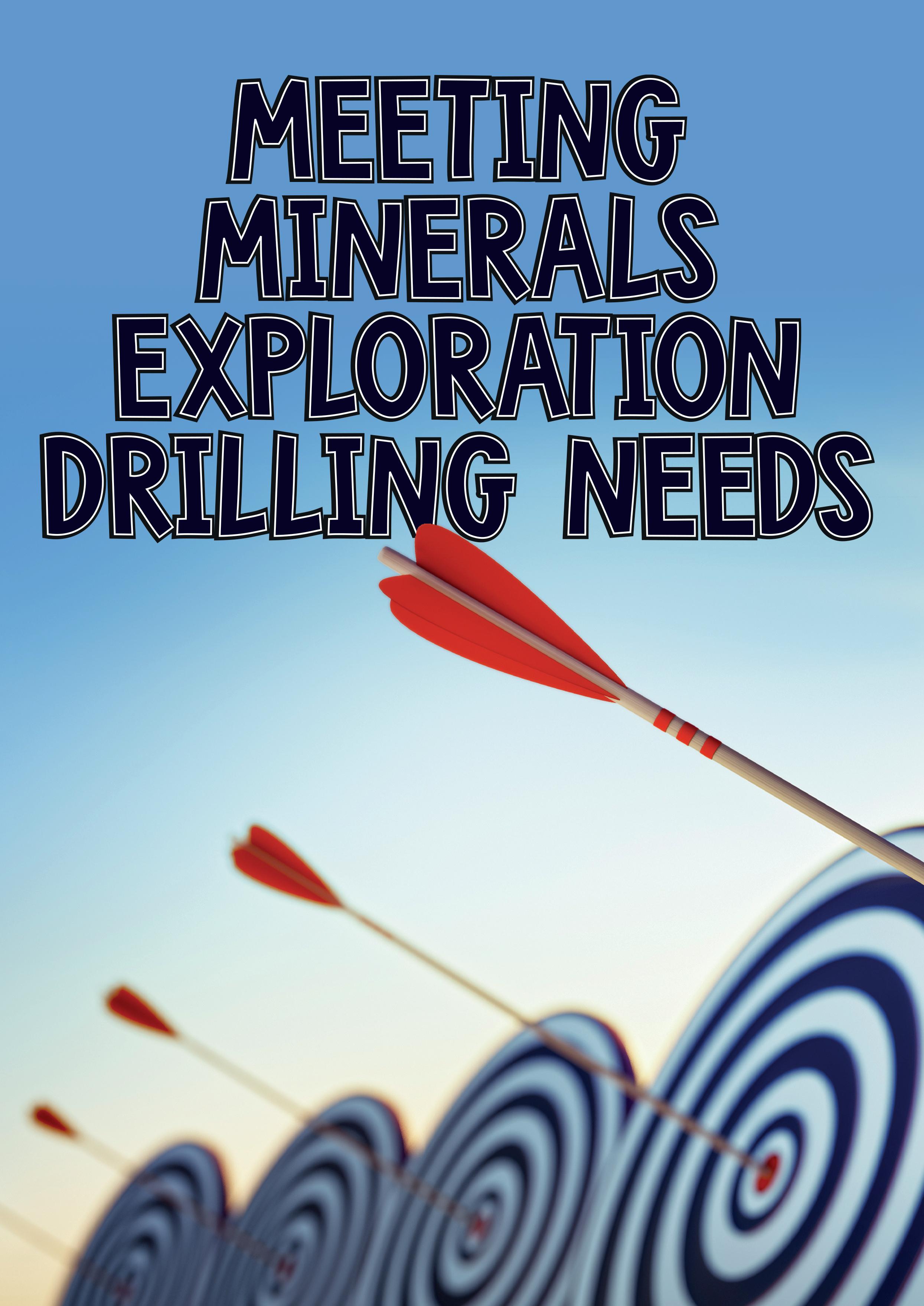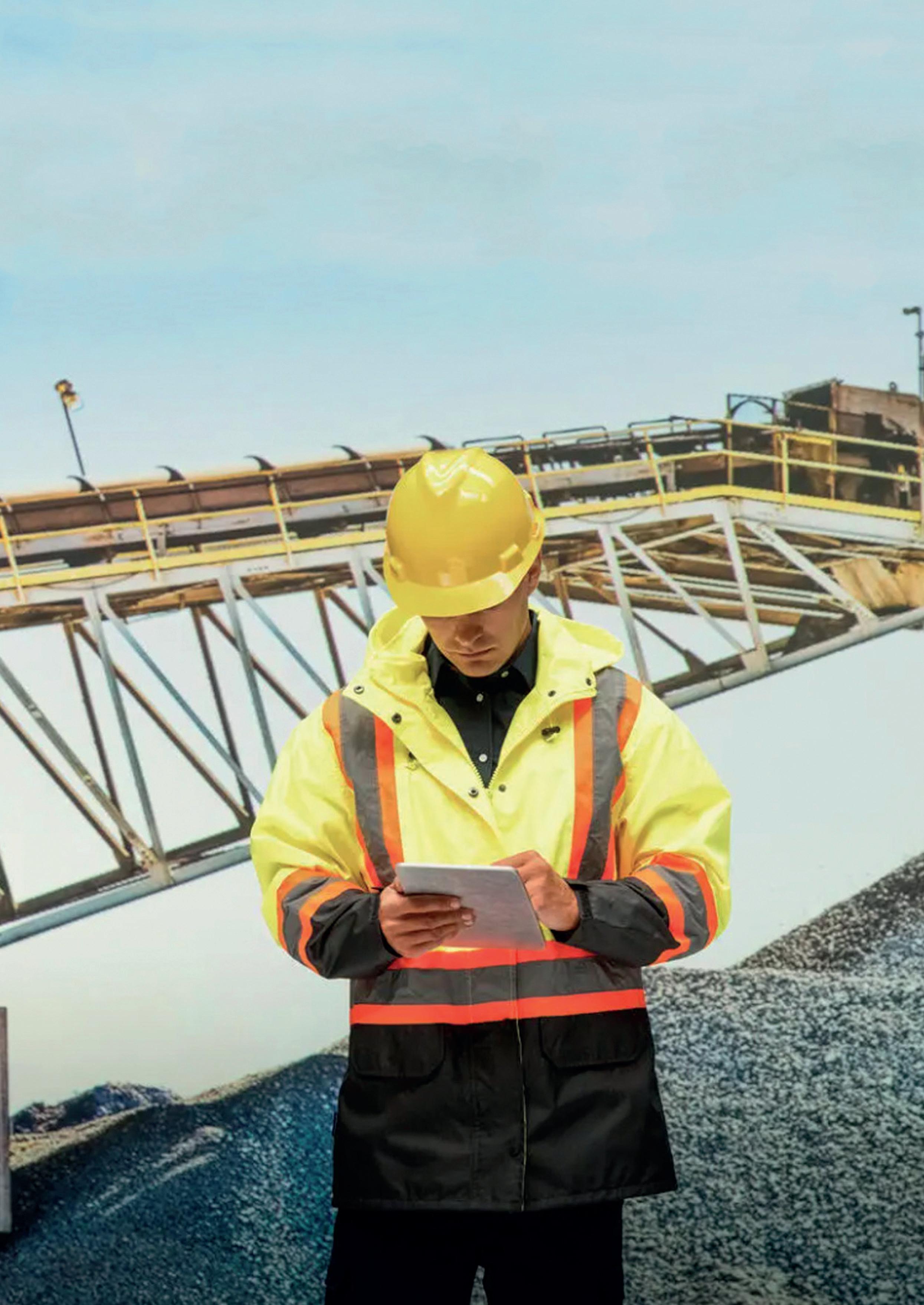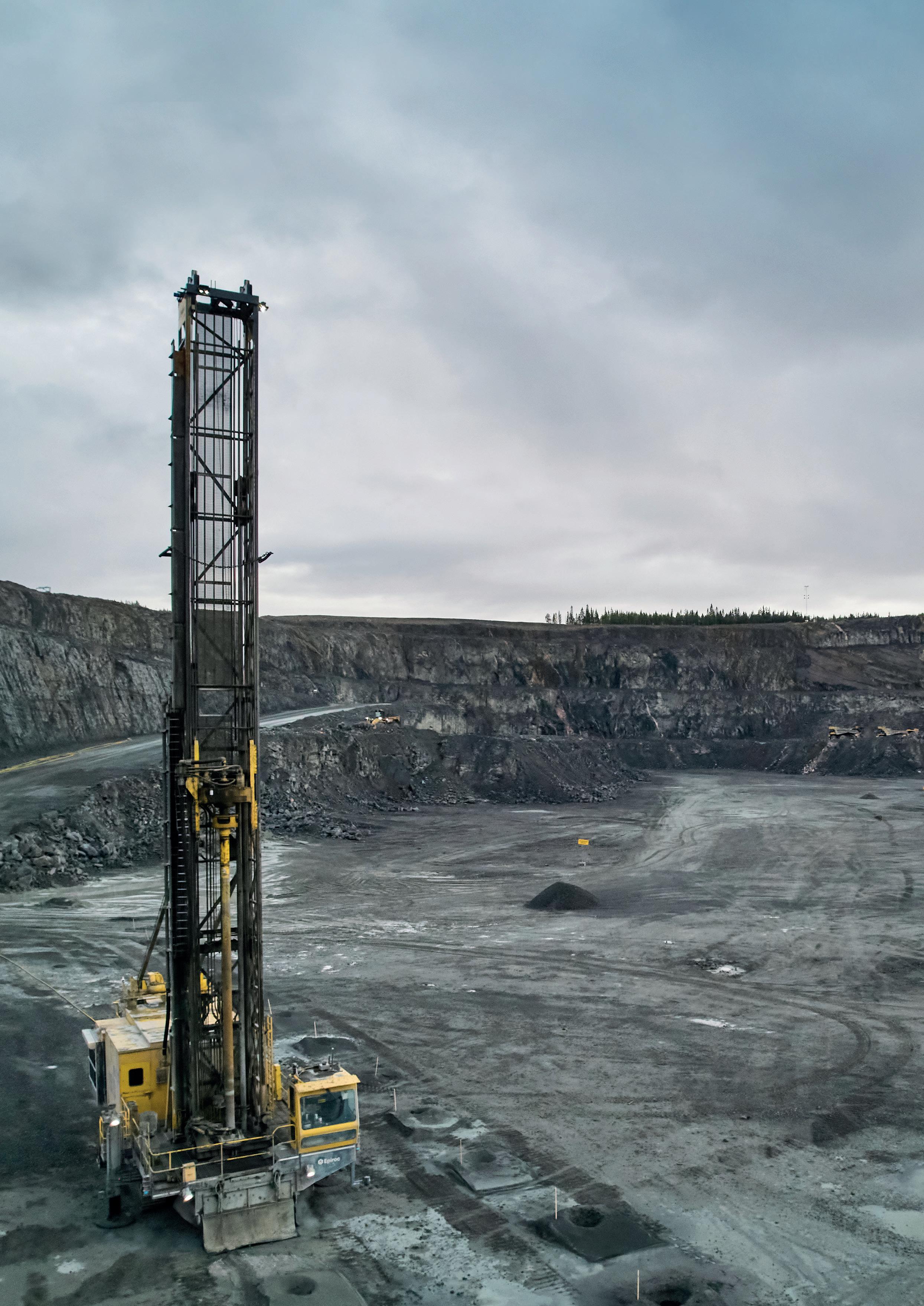
6 minute read
Going The Distance
Dr Kilian Neubert, BEUMER Group, Germany, discusses how curved belt conveyors can be used to efficiently transport material over long distances.
How can mining companies make their operations more sustainable and reduce their environmental footprints? One element that can be adapted to match the necessary conditions is the efficient transportation of mined material. Here, overland conveyors that can move large quantities of material over long distances are a good solution.
The company installed the first overland conveyor with horizontal curves as early as 1969. Since then, calculation methods and components (such as idlers, belts, and drives) have undergone constant development, resulting in the
implementation of increasingly efficient conveying systems for routes that are often complex. Mine operators can use BEUMER curved troughed belt and pipe belt conveyors to transport raw materials over routes with steep inclines and narrow curve radii. The company can match its systems to the required conveying task and topography. It relies on state-of-the-art planning and layout tools to suppot operators at an early stage of the project, and provide its customers with an efficient, sustainable, and cost-effective material flow.

Figure 1. The topography of the existing terrain has a significant influence on the design of the conveying system.
Figure 2. Long and difficult conveyor lines distances must be considered during the planning phase.
Figure 3. A 3D model of terrain and conveyor: the advantages of earthworks (cut and fill) or steel structures can be quickly and precisely assessed using graphic representations and mathematical calculations.
Figure 4. The BEUMER Overland Layouting Tool generates a digital 3D model of the conveyor in the virtual landscape during project planning – almost automatically.



Sustainability in mining
Raw materials are needed to produce almost all industrial and consumer goods; however, extracting them has far-reaching effects on the environment and society. This is why mining companies constantly strive to make their extraction and processing operations even more efficient and sustainable, and such efforts are called for in the planning of a new mine.
Mine operators must ensure that the population generally approves of the planned project. This approval can be obtained through extensive approval procedures, environmental impact studies, geo-monitoring, and the implementation of suitable risk management systems. Mining companies need to build trust with the public – for example, they need to involve the public and key stakeholders from an early stage of projects. As a result, operators need to integrate the issue of sustainability into all aspects of mine planning and improve the environmental compatibility of the overall system, by ensuring the efficient transport of ore and waste rock over longer distances. Optimised routing and the selection of suitable methods can help achieve these objectives.
The fundamentals and capabilities of modern conveying systems
No two conveying systems are alike, even if the primary task of transporting bulk material from A to B appears comparable. The components and the system must be adapted to suit the material that needs to be conveyed. The mass flow to be conveyed and height differences that need to be overcome over the length of the conveyor line are important factors that must be addressed when designing a system.
The energy consumption of long, horizontal belt conveyors is primarily determined by the main resistance in the upper and return strand in stationary operating conditions. This resistance consists of the running resistance of the idlers, the indentation rolling resistance, and the flexing resistance of both the conveyed material and the belt as they run over the idlers. The forces required to overcome these resistances depend on various operational and design parameters; however, they can be determined using the ‘single resistance method’. If components with low running resistances are used (such as belts with reduced indentation rolling resistance or running-optimised idlers), the calculations of the systems nowadays show considerably lower tractive forces of the belt than those of a few years ago. This leads to lower energy costs, and smaller radii can also be selected for the horizontal curves thanks to the lower tractive forces of the conveyor belt.
The topography of the existing terrain also has a significant influence on the design of the conveying system. An in-depth analysis of various dynamic load cases and a thorough investigation of the technically feasible horizontal and vertical curve radii must be conducted to design the system in the most efficient and environmentally friendly way. This is especially true for longer and more difficult conveyor lines. Potential obstacles that must be considered during the planning phase include residential areas, roads, and rivers. Today, curved overland conveyors (such as those offered by BEUMER) can be designed with lengths of up to 20 km or longer, without the need for a transfer tower. The conveying capacities of a system like this are more than 20 000 tph.
The right layout
The company uses its BEUMER Overland Layouting Tool to ascertain the ideal layout for the system. It generates a digital 3D model of the conveyor in the virtual landscape during project planning, more or less automatically. The critical topography data can either be provided by customers, or drones are used to capture terrain data. Important factors, such as ‘cut and fill’ volumes (i.e. the necessary excavation work), and the required steel structures for the conveyor can be evaluated and illustrated on this basis. This procedure can considerably accelerate the project planning process and enables the company to provide project-critical data to the customer at an early stage of the project.
Ongoing development
In BEUMER’s pipe conveyors, the idlers form the belt into a closed pipe that protects the material needing to be transported against external influences, and the environment from emissions such as dust and odours. This conveying solution is therefore ideally suited for fine bulk materials, such as ore concentrates. Pipe conveyors also allow tighter curve radii and greater angles of inclination compared to conventional troughed belt conveyors.
However, what if bulk material with large grain sizes requires a larger pipe diameter? The rule of thumb here is that the pipe diameter should be approximately three times the maximum grain size. To solve this problem, the BEUMER Group developed the U-shape conveyor: this variant combines the advantages of a troughed belt conveyor with those of a pipe conveyor. The idlers form the belt into a U-shape rather than a pipe, which enables tighter curve radii than a troughed belt conveyor and higher mass flows than a pipe conveyor, while also protecting the conveyed material from environmental influences and the environment from material loss and emissions.
Make every diamond count

with the COM XRT 300 /FR


Visit us at Electra Mining
5th - 9th September 2022 Hall 6 - Booth E07











